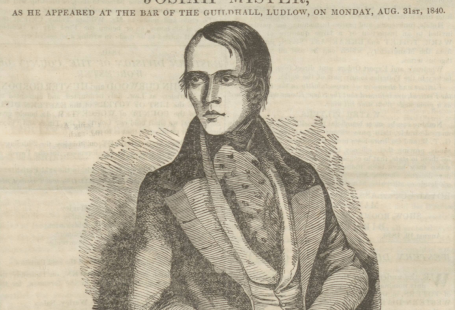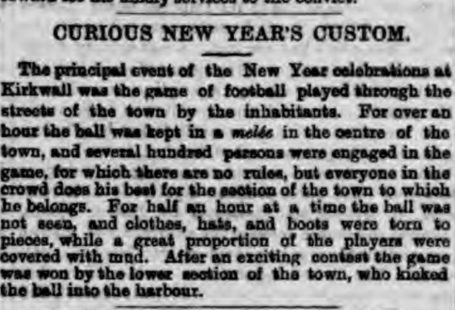This week at The Archive we are celebrating reaching another incredible milestone – we now have over 45 million pages available to search, with 134,854 new pages being added in the last week alone.
If this wasn’t enough, we have also added eight brand new titles this week, spanning London, Liverpool, Nottinghamshire, Kent and Cornwall, whilst we have also updated 15 of our existing titles. So read on to discover more about our new and updated titles of the week, as well as to discover more about a Cornwall engineering legend Richard Trevithick, who was credited with inventing the first operational steam locomotive in the early 1800s.
Register now and explore the Archive
And so it’s Cornwall calling with our first new title of the week, which is the Cornish Post and Mining News. First published in the Cornish town of Camborne, which was once one of the richest tin mining areas in the world, on 14 September 1889, the Cornish Post cost just one penny and consisted of eight pages.
Indeed, the newspaper described itself as:
…a high-class Mining and Commercial Liberal Unionist Eight Page Newspaper. It is the only penny paper printed and published at Camborne (the centre of the Cornish Mining Industry), and is the only paper in the West of England that is devoted to the Mining Industry.

So what type of content could you expect from this newspaper, with its focus on mining? Its first edition gives the reader this preview:
Besides giving the Mine Agents’ interim reports, it gives full and complete reports of all Cornish Mine meetings held either in Cornwall or London, and contains all the latest and most reliable news of Home and Foreign Metal Markets, and of all mining operations where metalliferous mining is carried out.
As if this wasn’t enough, the Cornish Post circulated ‘extensively throughout the West of England,’ whilst it had subscribers based in London and America. And alongside all of the latest mining news, the Cornish Post also featured national and international news, with articles like ‘Frivolity at the Guillotine,’ as well as containing columns like ‘Literary Jottings,’ ‘Hints for the Home,’ ‘Something for the Young Folk,’ ‘Yankee Humour,’ ‘Gardening – Work for the Week’ and ‘Words of Wisdom.’
The Cornish Post was incorporated into the Cornishman from 1944 onwards.
Our next new title of the week hails from Kent, and is the Deal, Walmer & Sandwich Mercury. First published in the seaside town of Deal in 1865, which was during the Victorian period ‘a favourite watering place’ and still remains to this day a popular seaside resort, it was described as ‘The only penny Conservative newspaper printed in the locality.’
Circulating ‘extensively…throughout the district,’ that is, in Deal, Walmer, Sandwich, Dover, ‘and the surrounding villages,’ the Deal, Walmer & Sandwich Mercury was published every Saturday morning and sold approximately 1,500 copies every week. Published to this day, only now on a Thursday, the newspaper’s name was changed to the East Kent Mercury.

Next up is a trip to Nottinghamshire, and our third new title of the week, which is the Newark Advertiser. This historic Nottinghamshire newspaper has its origins in 1847, when William Tomlinson of Stodman Street, Newark-on-Trent, published his Newark Monthly Advertiser. Costing one pence, and consisting of four pages, in 1854 the newspaper became weekly and was known as the Newark Advertiser and Farmer’s Journal.
When Tomlinson died, his son-in-law Mr. Whiles took over, and in the late 1850s the newspaper changed its name to the Newark Advertiser, and Mercantile and Agricultural Intelligencer for the Midland Counties. In 1874 Cornelius Brown became the editor of the publication, buying a half share in the interest, whilst six years later the newspaper again changed its name to the snappier Newark Advertiser.

A politically independent publication, it appeared every Wednesday and circulated ‘extensively in Newark and the important agricultural districts of which it is centre.’ The Newark Advertiser continues to be published to this day, and appears now every Friday.
Our next five titles of the week have all been published via the British Library’s Heritage Made Digital project, which you can read more about here, and they hail from London and Liverpool respectively.
Let’s make a start with Liverpool, and the historic Liverpool Chronicle 1767. First published on 19 November 1767 by T. Cowburne of Atherton Street, this publication consisted of eight pages and ran with the William Congreve motto of ‘It is some virtue, virtue to commend.’

Cowburne’s new printing venture, working from Atherton Street, ‘where printing, as well as Copper Plate as Letter Press is done in the neatest, cheapest, and most expeditious manner,’ appeared every Thursday, featured both national and international news. You can, for example, find within the pages of the Liverpool Chronicle the latest mails from the Netherlands and from Warsaw, as well as news from London and places like Portsmouth.
Meanwhile, items of more local interest too could be found within its pages; such as imports at the Port of Liverpool, and the tide timetable for the city.
From Liverpool to London now, and West London in particular, with our next new title the West Londoner and Select Advertiser for the Borough of Marylebone. This newspaper was first published on 26 November 1870 from offices on the Edgware Road, and consisted of four pages at the cost of only half a penny.
A distinguishing feature of the West Londoner was its large type, unusual for newspapers of the day, which it addressed in its first edition:
But why such large type? That we may be read running. As things go, the placards are scanned, and the newspapers neglected. We are visible sans glasses – legible during a jolt. By road and rail, at the bar, the table, on the fireside, we claim our characteristic.

With its characteristic claimed, the West Londoner professed its politics, protesting that it would ‘seek the suffrages of no class, but of West Londoners.’ Promising to look for its subjects ‘firstly at home,’ the West Londoner featured the latest from the Paddington Board of Guardians and the Police Court, as well as the London School Board. It also featured such columns as ‘Out and About by our Reconnoitrer,’ ‘Comic and Sarcastic,’ and ‘Rhymes to Run and Read.’
And we have another West London title added to The Archive this week, namely the Paddington Advertiser. First published in 1861 at the price of one penny, this newspaper was ‘Circulated Throughout Paddington, Marylebone, Kilburn and Portland Town.’ The Paddington Advertiser was one of a few sister papers, which included the Chelsea and Pimlico Advertiser and the Hammersmith Advertiser.
Appearing every Saturday, and consisting of eight pages, the Paddington Advertiser, true to its name, contained three full page of advertisements, as well as national and international news. It also featured such sections as ‘Metropolitan Gossip,’ ‘Agricultural Prospects,’ ‘Literary Selections,’ as well as poetry. You can also find within its pages ‘Parochial News’ from the likes of the Chelsea Vestry, Fulham Board of Works, Kensington Board of Guardians and the Hammersmith and Fulham Union.

Sister paper to the Paddington Advertiser was our next new, and penultimate title, the North-West London Times. First published on the 28 September 1861, the North-West London Times cost one penny and circulated ‘throughout St. Pancras, Marylebone, Bloomsbury, Holborn, Islington, Holloway, and Hampstead.’
Appearing every Saturday, this title contained such columns as ‘Facts and Rumours,’ ‘Notes from Abroad,’ and ‘American Items.’ It also had a focus on ‘Parochial News,’ with the latest from the various vestries, boards of guardians and ratepayers’ associations. Like the Paddington Advertiser, the West London Times featured three whole pages of advertisements.

Our final new title of the week is the Conservative Surrey & Middlesex Standard, which claimed to be Surrey’s first ever newspaper when it was first published on 28 February 1835. This Saturday newspaper, which cost seven pence, was initially known as the Surrey Standard and Middlesex, Sussex, Kent, Hampshire & Berkshires Advertiser, and was published from Crane Court, Fleet Street.
Its first edition notes how ‘It has long been a matter of surprise’ that the county of Surrey has been ‘without a newspaper of any kind whatsoever.’ And so, the Surrey & Middlesex Standard aimed ‘to supply this deficiency.’ Meanwhile, it also aimed:
…to support the existing Constitution in Church and State; to promote, by every means in their power, the increase and organization of the principles by which alone the frightful torrent of democracy which now threatens to overwhelm the most hallowed Institutions of the country.

These were, the Surrey & Middlesex Standard professes, ‘no times for neutrality.’ So what could you expect from this rather militant newspaper? It featured detailed reports from Parliament, as well as international news from France, Portugal, Turkey and South America, ‘Colonial News’ from the East and West Indies, as well as the latest from Ireland.
The Surrey & Middlesex Standard also had a focus on local news, featuring updates from Southwark, Lambeth, Guildford, Godalming and Epsom. Meanwhile, the newspaper contained news from the worlds of the law, the police, the church, and universities.
That’s it from our new titles of the week, we hope you enjoy browsing them as much as we have! And don’t forget to check out our updated titles of the week, of which there are 24. Some of the highlights this week include the over 30,000 pages we have added to Kent’s Faversham News, as well as the 8,000 pages we have added to two of our East Anglian titles, namely the Bury Free Press and the Diss Express.
The Life and Legacy of Richard Trevithick
With the addition of Camborne’s Cornish Post and Mining News this week, it would be remiss of us not to explore the life and legacy of inventor and engineer Richard Trevithick, one of Camborne’s greatest and most famous sons, who the newspaper in 1927 dubbed ‘The greatest and worst-used man in the country.’
Trevithick, who is perhaps best known for being credited as inventing the first operational steam locomotive, was born on 13 April 1771, at Illogan near Carn Brea Hill, as relates the Cornish Post. The newspaper tells of how:
He received his education at Camborne, and his practical knowledge of engineering was gained in Camborne mines, of which his father, Richard Trevithick, senr., was manager and engineer.

The young Trevithick was already showing signs of engineering promise:
In 1795, Trevithick erected a steam engine at Wheal Treasury mine, competing with Watt and Bull, junr., both of whom received pay for the saving of fuel by improvements in the steam engines in mines, under the management of Trevithick, senr. On the death of his father, Trevithick was appointed leading engineer in the mines of Camborne and Redruth.
Throughout the late 1790s Trevithick continued to invent, creating high-pressure engines which ‘grew rapidly into the practical steam puffer,’ and then eventually, in 1801, Trevithick invented ‘England’s first passenger-carrying road locomotive,’ which ‘ran through the streets of Camborne.’
Working without rails, on ‘common roads,’ the Cornish Post in 1927 contains this vignette of Trevithick’s ground-breaking invention:
His road locomotive of 1801, the ‘puffing devil,’ carried the first passengers ever conveyed by steam. When it drew up to a toll to pay, the terrified keeper shouted, ‘Nothing! Nothing! Mr. Devil, sir. Please drive on.’

In 1805 Trevithick travelled to London, as the Cornish Post relates in 1925. He travelled there with his ‘common road-passenger steam carriage,’ which ‘made several runs through some of the principal streets of the City.’ Indeed, as the Cornish Post reports in 1927:
…on his circular rail track in Euston Square, he ran for weeks the first embryo passenger train. ‘Fares’ rode in a carriage at twelve to fifteen miles an hour, until a broken rail ended the prophetic novelty.
And indeed, Trevithick’s fortunes were to take a turn for the worst. Despite being full of innovative ideas, the Cornish Post in 1927 remarks how he ‘was without commercial sense,’ even though he:
…bubbled over with inventions like a mountain spring. The list of his suggested new uses of steam and iron contains the first steam-dredger; cranes for unloading ships and conveying goods to warehouse floors; steams, without steersmen and timed to explode, to blow up the French fleet; iron tanks for ballasting ships, and for raising sunken ones; a pile driver; engines for boring and quarrying; iron ocean steamers; sailing vessels with self-reefing sails; an iron floating-dock; cooking by steam; threshing machines; screw propellers for ships; and a tunnel under the Thames.

An ill-fated and ill-advised trip to Peru in the 1820s eventually bankrupted him, and he was even sent to prison ‘for debt.’ In 1833 he died in Dartford, penniless and ‘without a relative,’ having been working in a factory there. The Cornish Post in 1927 relates how:
His fellow workmen paid for his funeral, and carried ‘the greatest mechanical genius England ever saw’ to his grave.
The tragedy of Trevithick was, then, that he became overlooked when compared with the other great inventors of the day, such as George Stephenson. The Cornish Post in 1925 was understandably up in arms about this, after the centenary celebrations of the Stockton and Darlington Railway:
What appeared in the Press, both pictorially and in descriptive articles, conveyed to the English public that Stephenson was the inventor of the locomotive, and it was to be deplored that Trevithick, the great Cornish inventor, who preceded Stephenson by thirteen years with the invention of England’s first passenger-carrying locomotive was not mentioned.
For as the newspaper recounted some years before, it was Trevithick who:
…made the locomotive a practical thing, to run on rails, capable of drawing a train of tram-waggons, and this was the first effective locomotive, which opened up the commercial possibilities which later improvements have so marvellously realised in practice.

Indeed, as the Cornish Post wrote in 1925, Richard Trevithick’s:
…experiments set others thinking and in a few years from his last run on the London circular railway, they could trace Murray’s locomotive, Hedley’s in 1813, Stephenson’s in 1814 and 1825 and Hackworth’s in 1829, all of which bore great resemblance to Trevithick’s invention.
A tragic yet brilliant figure, Trevithick is remembered by his home town, Camborne, as ‘the greatest inventor since Leonardo da Vinci.’
New Titles
Title |
Years Added |
| Cornish Post and Mining News | 1889-1895, 1898-1899, 1919-1944 |
| Deal, Walmer & Sandwich Mercury | 1989 |
| Liverpool Chronicle 1767 | 1767-1768 |
| Newark Advertiser | 1989-1990 |
| North-West London Times | 1861-1866 |
| Paddington Advertiser | 1862-1866 |
| Surrey & Middlesex Standard | 1835-1840 |
| West Londoner and Select Advertiser for the Borough of Marylebone | 1870-1872 |
Updated Titles
This week we have updated 15 of our existing titles.
You can learn more about each of the titles we add to every week by clicking on their names. On each paper’s title page, you can read a FREE sample issue, learn more about our current holdings, and our plans for digitisation.
Title |
Years Added |
| Australian and New Zealand Gazette | 1852, 1855, 1864, 1866 |
| Bury Free Press | 1993-1994 |
| Croydon Times | 1924, 1926 |
| Diss Express | 1988-1990 |
| Faversham News | 1936-1949, 1951-1980 |
| Fenland Citizen | 1986, 1989 |
| Grantham Journal | 1993 |
| Haverhill Echo | 1888, 1993 |
| Lynn News & County Press | 1873, 1924 |
| New Milton Advertiser | 1989 |
| Newmarket Journal | 1987, 1993 |
| North Londoner | 1869-1875 |
| Saffron Walden Weekly News | 1994-1995 |
| Spalding Guardian | 1993-1994 |
| Suffolk and Essex Free Press | 1987, 1993 |
You can keep up to date with all the latest additions by visiting the recently added page. You can even look ahead to see what we’re going to add tomorrow.






